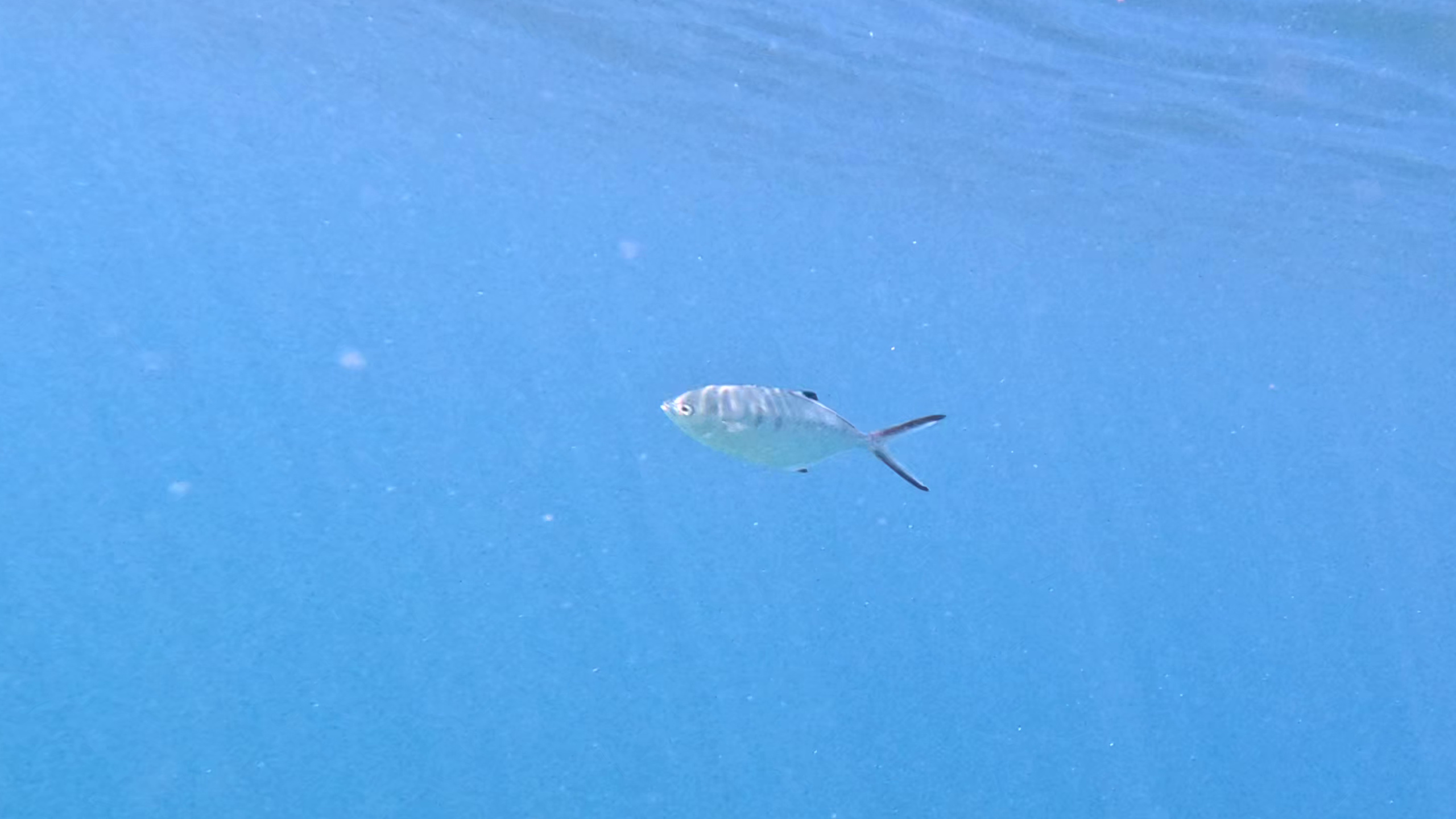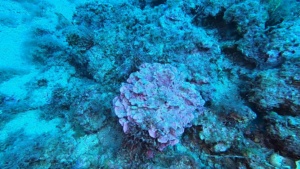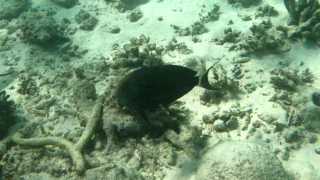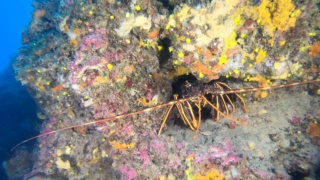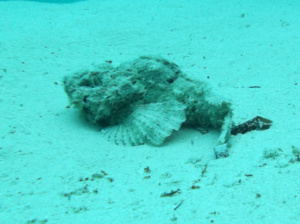The Pompano, Trachinotus ovatus, is a bony sea fish belonging to the Carangidae family. In the video we see a specimen trying to capture anchovies, Engraulis encrasicolus, with rapid and lightning attacks.
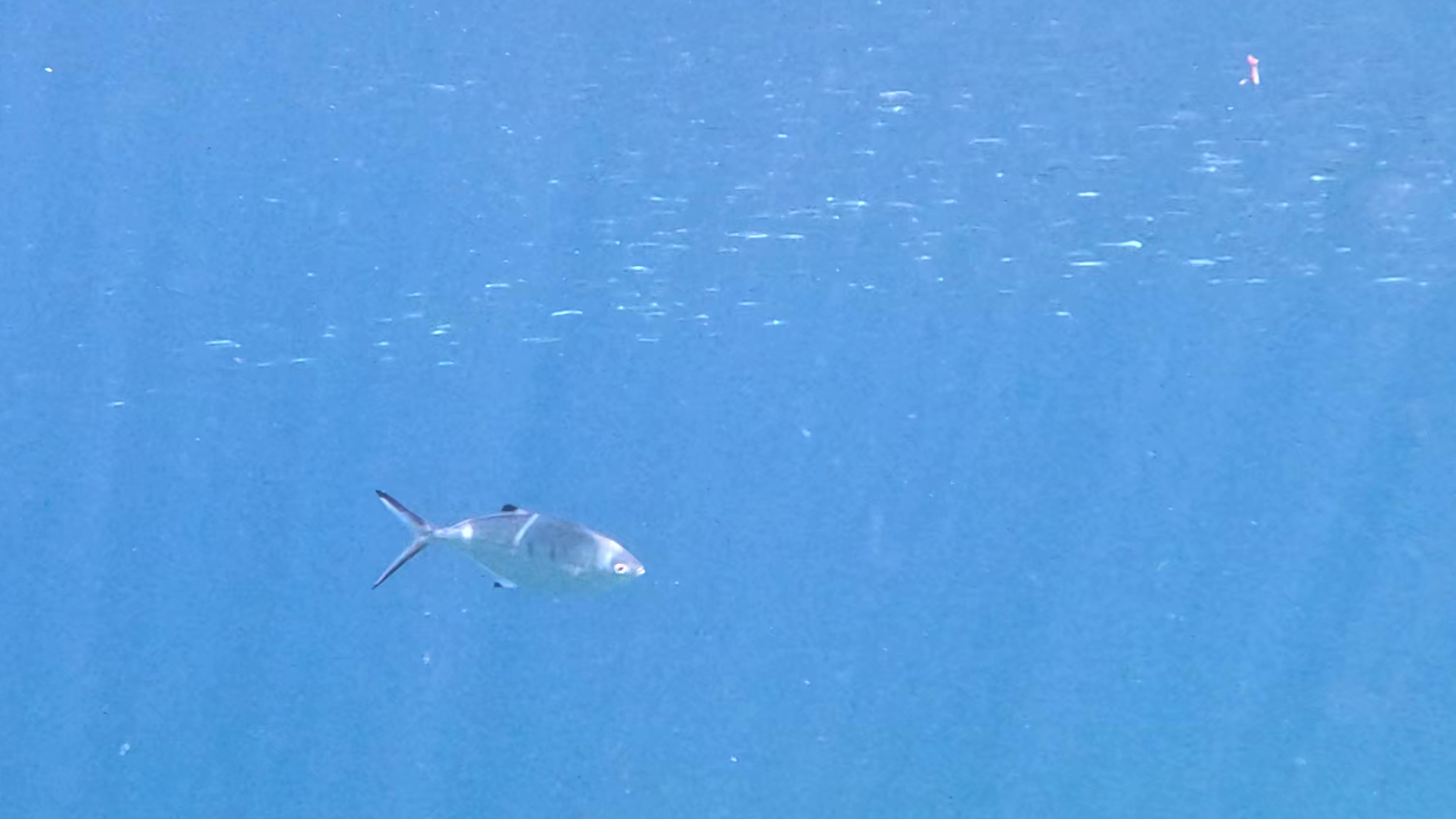
European anchovy acciuga europea o alice Engraulis encrasicolus – Pompano Trachinotus ovatus Leccia stella – intotheblue.it
Distribution and habitat
It is widespread throughout the Mediterranean Sea and in the eastern Atlantic Ocean between the English Channel and tropical Africa. It has very rarely been found as far north as Sweden and Norway. In Italian waters it is very common. It is pelagic but typically coastal, it is usually found on sandy substrates but it is not an imperative. In the winter it stays further out.
Description
It has an ovoid body, laterally compressed, with a small mouth and rather large eyes compared to the pompanos. The anal and first dorsal fins are symmetrical and opposite, the tail deeply falcate. The color is pearly white with 3-5 darker oval spots on the sides and with black fin tips. It rarely reaches 50 cm in length with a maximum of 2 kg.
Diet
Based on small fishes, especially latterini, which also hunt close to the shore. Its technique is based on throwing itself into the school and struggling when it grabs a prey. The fish in a desperate attempt to confuse the leerfish jump out of the water.
https://it.wikipedia.org/wiki/Trachinotus_ovatus
https://en.wikipedia.org/wiki/Trachinotus_ovatus
Gallery
European anchovy, Engraulis encrasicolus (Linnaeus, 1758) is a marine bony fish belonging to the Engraulidae family of great economic importance.
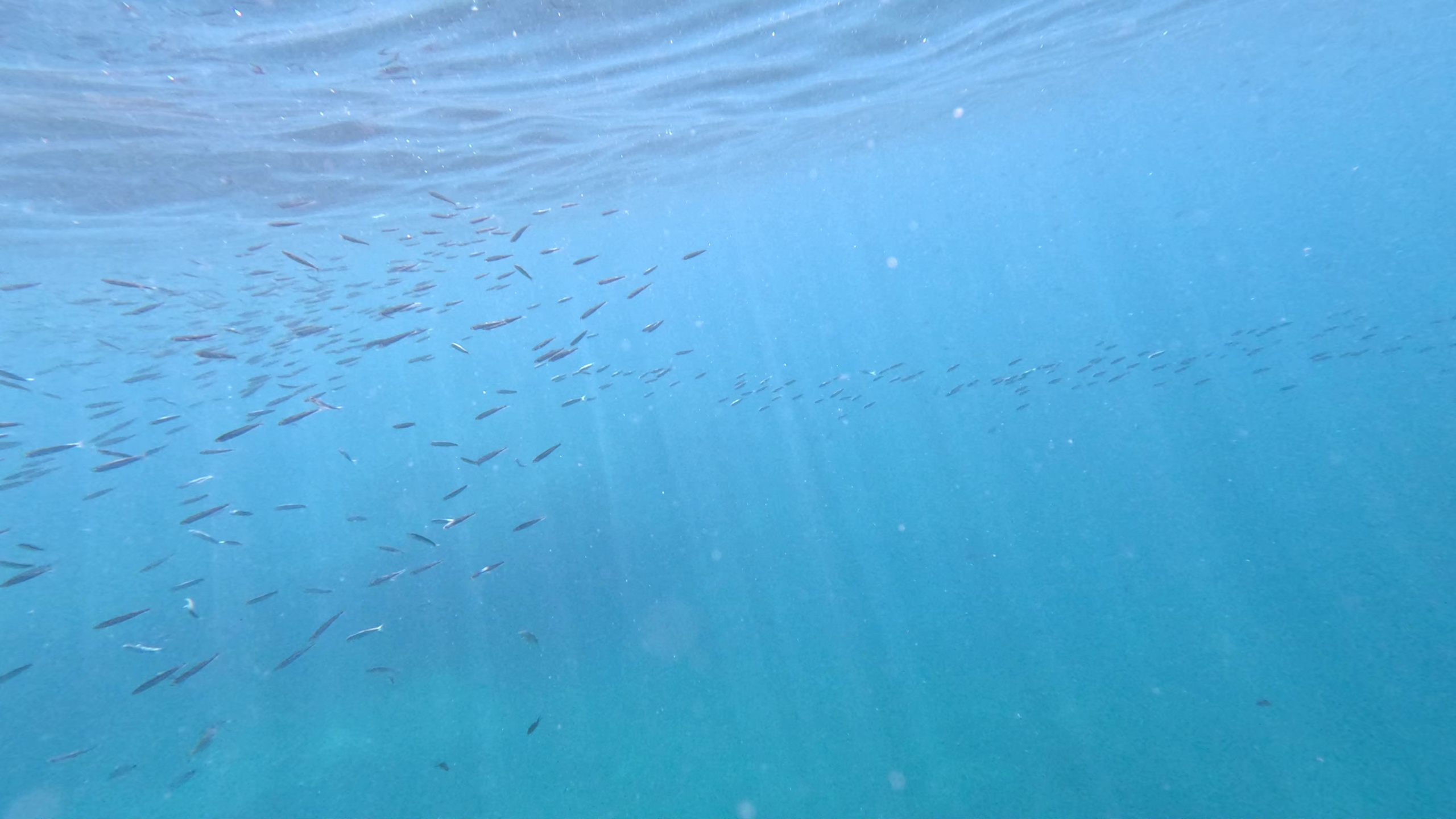
European anchovy acciuga europea o alice Engraulis encrasicolus – Pompano Trachinotus ovatus Leccia stella – intotheblue.it
Habitat and distribution
The species is widespread in the eastern Atlantic Ocean, between Norway and South Africa. It is also present and common in the Mediterranean, Black and Azov seas. Some specimens have been caught in the Suez Canal; it is therefore one of the few species of Mediterranean fish that have undertaken a migration towards the Red Sea, in the opposite direction to that of the Lessepsian migrants.
It is a typical pelagic fish that can also be found at a great distance from the coasts, which it approaches in May-June for reproduction. Usually, in the warm season it is not encountered at depths greater than 50 metres; the maximum recorded depth is 400 meters. In winter it frequents deeper waters, around 100-180 meters in the Mediterranean.
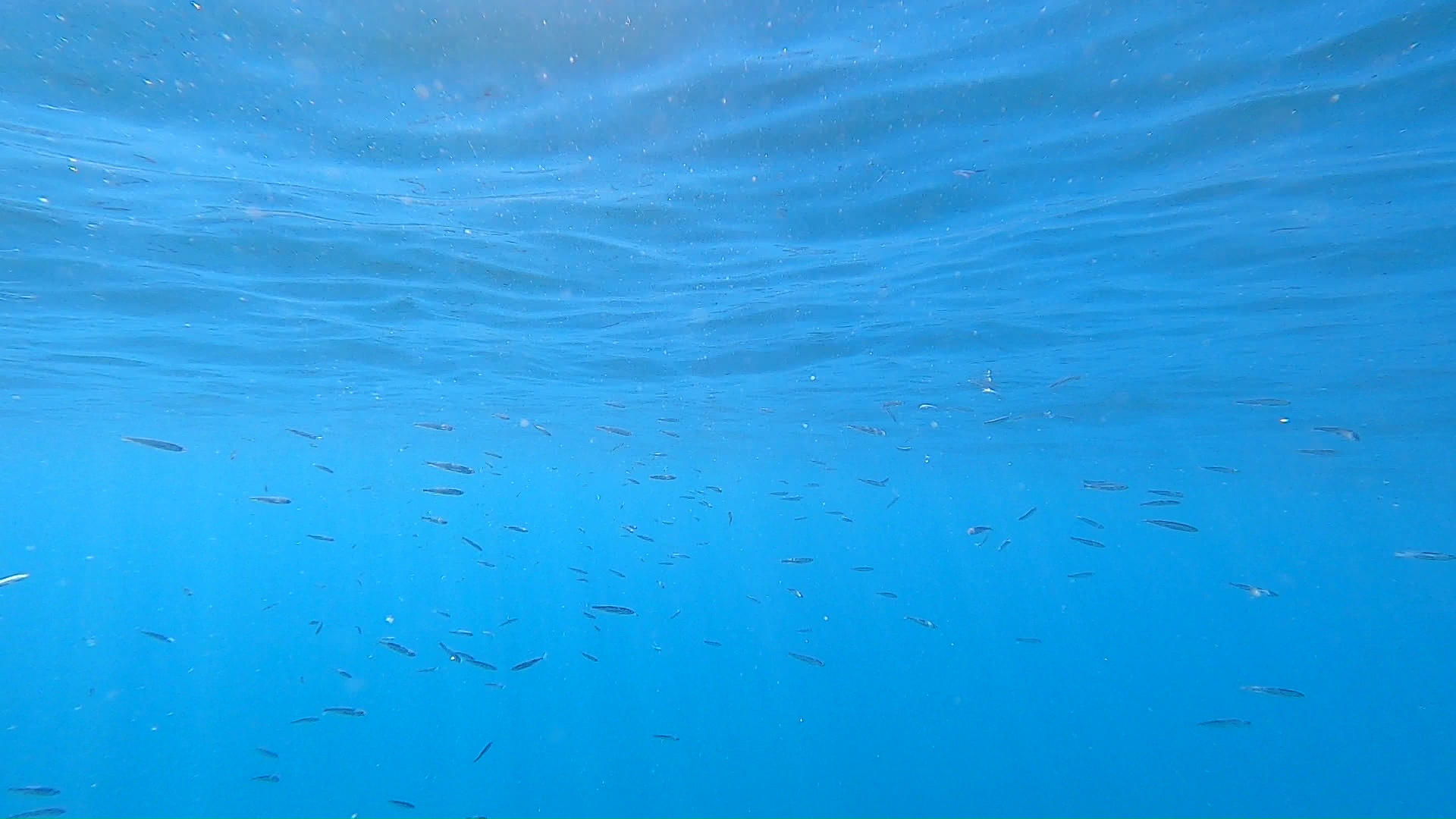
European anchovy acciuga europea o alice Engraulis encrasicolus – Pompano Trachinotus ovatus Leccia stella – intotheblue.it
Description
Although the anchovy is often associated with the sardine and sometimes confused with it, these two species belong to different families and have a decidedly different appearance. The anchovy has an elongated and slender body, with a cylindrical section, without the ventral crest of rigid scales present in the sardine. The head is large (about ¼ of the total length), conical, pointed, with large eyes placed at the front end of the head, in a very advanced position.
The mouth is also large (much more than in the sardine), wide beyond the eye, and is placed in the inferior position (ie in the lower part of the head); it is armed with small and numerous teeth. The upper jaw is longer than the lower. The flakes are small and detach easily. The dorsal fin is quite short, triangular in shape, inserted about halfway down the body. The anal fin is set further back, lower and longer than the dorsal. The ventral fins are small and placed at the height of the origin of the dorsal; the pectoral fins are inserted very low, near the ventral edge of the body and are narrow and elongated. The caudal fin is bilobed.
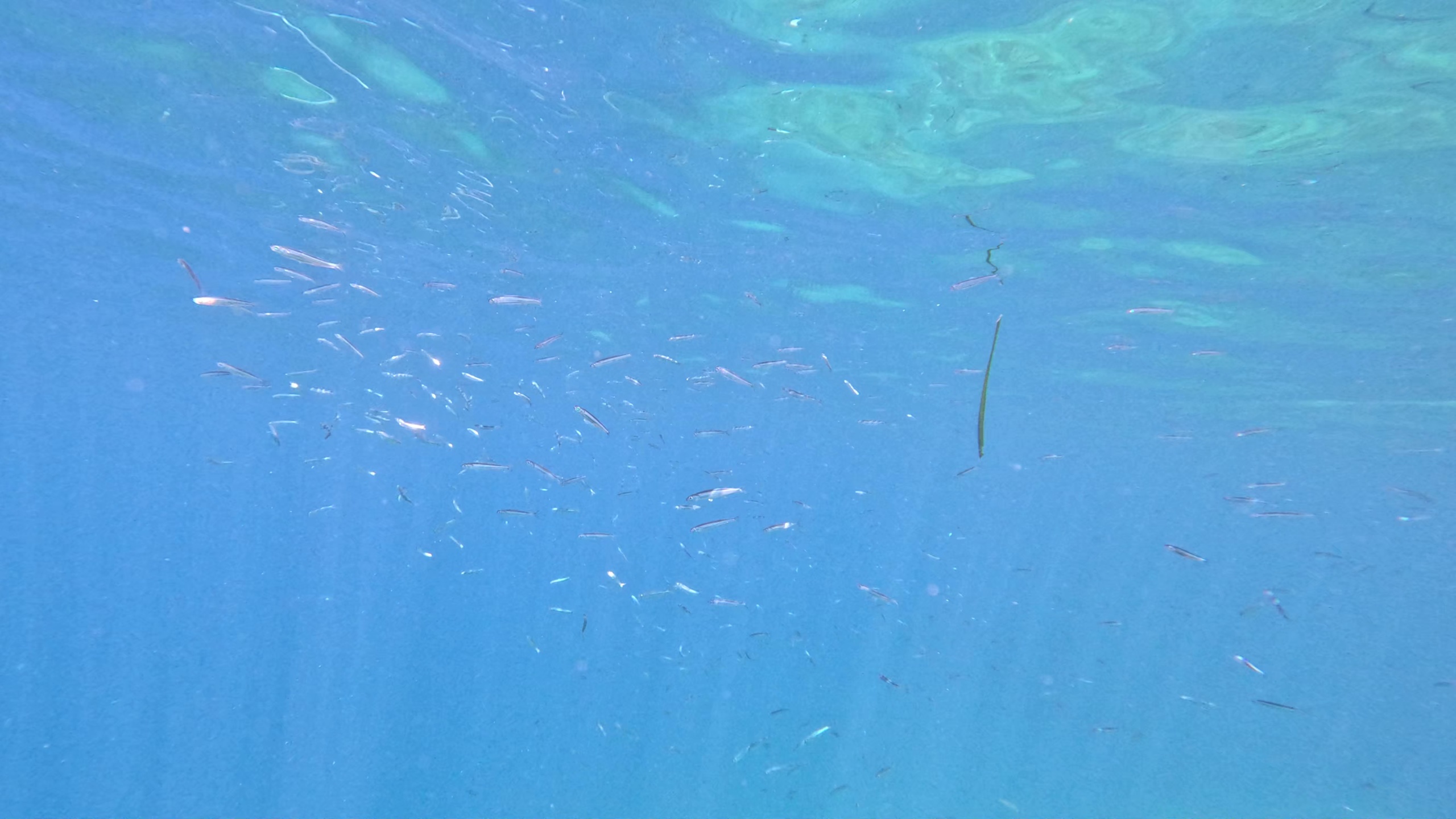
European anchovy acciuga europea o alice Engraulis encrasicolus – Pompano Trachinotus ovatus Leccia stella – intotheblue.it
Biology
It is a gregarious species in every vital phase that forms very numerous shoals, often mixed with other species (for example the sardine) but composed of specimens of similar size (phenomenon known as gregariousness by size). The anchovy performs both seasonal migrations, given that it moves to deep waters in winter, and nicthemeral migrations, meaning that it moves to different depths throughout the day. It can live up to 5 years.
Diet
It feeds by day. It feeds on zooplankton, the main preys are copepod crustaceans and mollusc larval stages.
Reproduction
Spawning occurs in coastal waters between April and November and peaks in June and July. The eggs, laid in numbers up to 40,000, are pelagic. The eggs hatch within 2 days, and the larvae just 2 mm long, known together with those of sardines as gianchetti or whitebait, immediately aggregate in shoals. Sexual maturity is reached at one year.
https://it.wikipedia.org/wiki/Engraulis_encrasicolus
https://en.wikipedia.org/wiki/European_anchovy
Gallery
 English
English Italiano
Italiano
